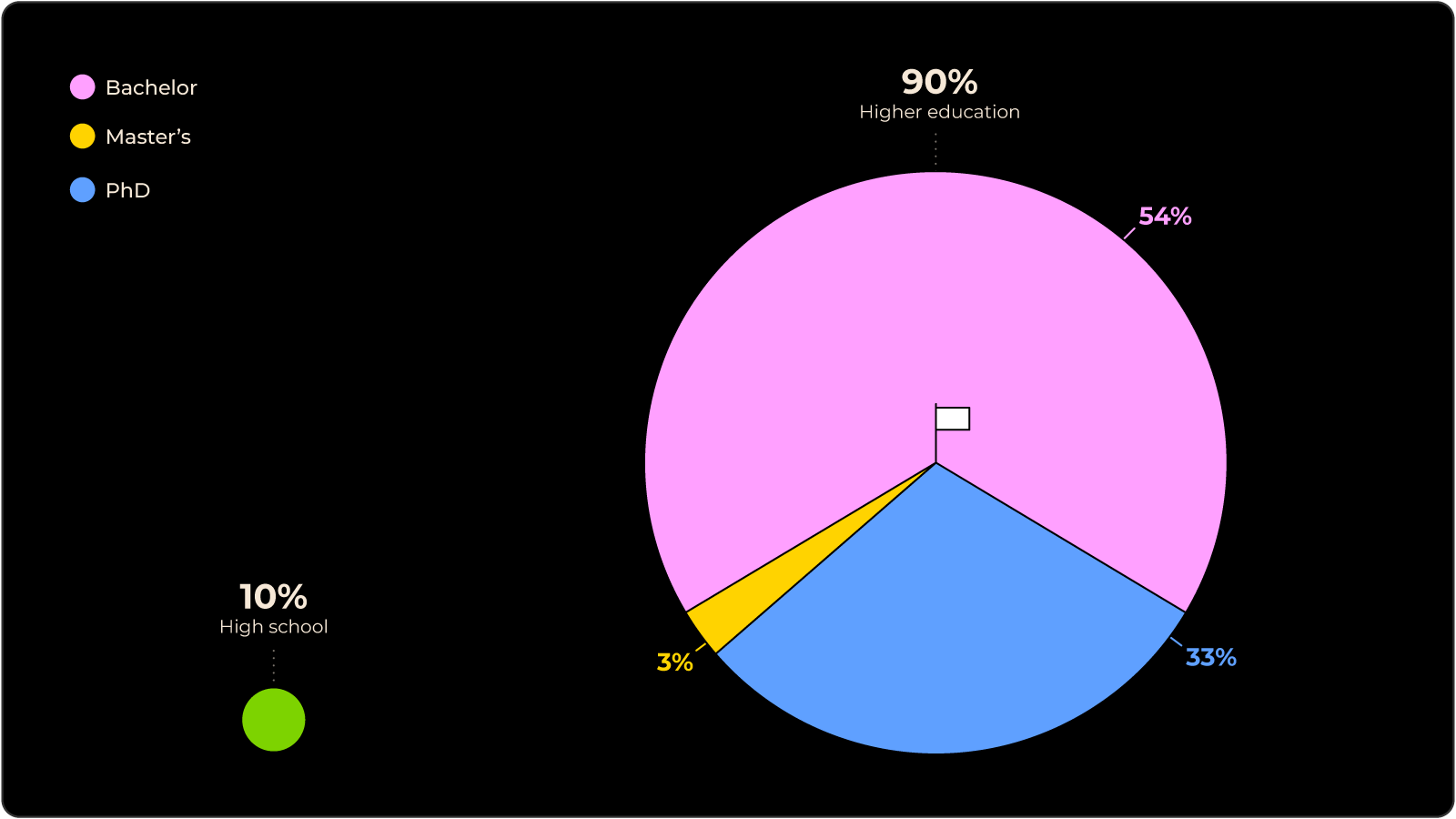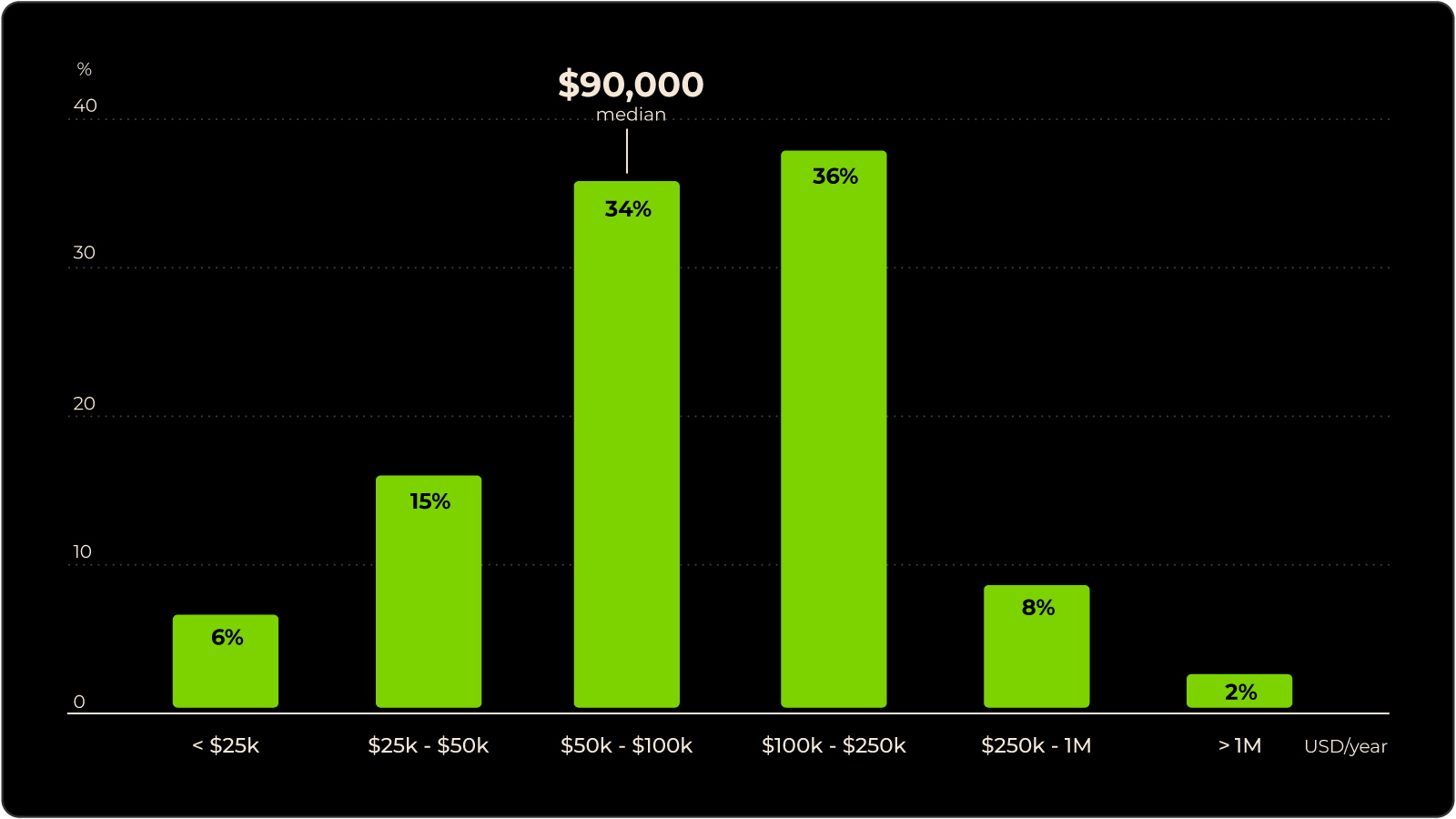Key Facts
- The growth of remote work has enabled a new model for economic development.
- Successful incentive programs in the US demonstrate the potential for remote workers to help stimulate job creation, upskill workforces, and boost economic growth.
- 72 million Americans are expected to become digital nomads within the next three years.
- As more people go nomadic, countries and cities are competing for the economic benefits, knowledge and connections they bring.
In 1964, the technologist Arthur C. Clarke predicted that communication technologies would make it possible to work as easily from Bali as it is from London, “perhaps only 50 years from now.”
The internet has accelerated the free flow of trade, capital and knowledge across borders. Just as Clarke predicted, it has also disconnected work from location. Today, it’s certainly true that a remote worker can use the internet to conduct their business just as well from a tropical paradise as from a major global city. But what Clarke didn’t predict is how remote work would spark a battle between countries to attract that global talent.
Over the past two decades, millions of knowledge workers left behind expensive cities such as London, Amsterdam, Paris, and New York. As it became possible to perform their jobs remotely, they opted to move to lower-cost destinations in other parts of the world: namely, Eastern Europe, Southeast Asia and Latin America. This demographic are known as “digital nomads.” Many policymakers now view these modern nomads as crucial to boosting economies, enhancing business ecosystems and safeguarding against aging populations and declining birth rates.
Who Are Digital Nomads?
Quite simply, digital nomads are people who travel and remote work at the same time. This emerging demographic represents a new attitude towards work and location, facilitated by the rapid rise of global remote work opportunities. They are also some of the most highly prized visitors to any location in the 2020s. Here’s what we know:
✦ Nomads are a growing demographic: 16.9 million American workers currently describe themselves as digital nomads, increasing 131% from 2019.

✦ Nomads are highly-skilled: around 90% of nomads hold university degrees, and they typically work in the knowledge economy or creative industries with jobs such as software development, marketing, and content creation.

✦ Nomads are highly-paid: the median income for nomads is $90,000, putting them in the top 1% of income-earners internationally.

Unlike tourists or expats, nomads typically stay between two months and two years in a location while striking a balance between work and other aspects of their lives. They also return to favorite hotspots year after year as they forge relationships and deepen their connection to places, and the people within them. Nomads are not one-time tourists or long-term settlers. Rather, they are recurring visitors who roam wherever interesting opportunities for work and adventure invite them.
According to MBO Partners, 72 million Americans are expected to join this emerging demographic within the next three years. This means 26% of the US population could be nomadic by 2027, and reports suggest the trend is growing just as quickly in Europe. With more people set to become nomads in the years ahead, it’s important to understand their potential impact on the communities that host them, and the economic opportunities for governments that choose to engage with them.
Nomads' Contribution to Local Economies
Nomads bring their globally competitive salaries with them wherever they go. This can be especially beneficial for emerging economies, as nomads typically earn their salaries from higher-income countries and spend in locations where their money stretches further.
According to the government of Madeira, a nomad’s average in-country spend comes in at around $2,100 per month. As nomads are usually entrepreneurs or work remotely for overseas companies, they don’t take away local jobs, which means their spending is a direct gain to host communities. Nomads’ presence creates opportunities for new businesses that target them as a demographic, such as coworking spaces, events and conference spaces, hotels and apartment rentals, cafes, bars, and restaurants. But the nomad opportunity isn’t only about direct spending.
Those who can afford to work from anywhere tend to have strong skills and deep, cross-border connections in their professional field. This means nomads can provide training, mentorship, or even assistance in setting up local ventures, while also connecting existing ventures to global opportunities. As a result, many governments are now turning to nomads to chart a new path for economic growth and job creation.
The Global Battle for Talent
Following the 2009 financial crisis, Southern Europe lost millions of young, educated workers to richer countries. Greece alone lost around 800,000 workers to this brain drain, while Italy's economy is estimated to have missed out on $15.2 billion in potential growth from 2009 to 2017. For such countries, the impact of ineffective talent retention is clear, which is why they’re now seeking to rejuvenate their economies by focusing more on both attraction and retention of knowledge economy talent.
In 2021, Italy launched a $1.1 billion revival project aiming to turn 2,000 “ghost towns” into remote work hubs. The funding went towards installing high-speed internet in rural areas and modernizing real estate to be more attractive to nomad visitors. In Sicily, the Italian government is offering $61,000 for people under the age of 30 to build social enterprises in culture and tourism in one of 23 designated villages.
Meanwhile, the Greek government has made attracting remote workers a key priority. In 2021, it passed a law granting nomads who base their tax residency in the country a 50% income tax discount for up to seven years, with the Greek Tourism Minister forecasting the Mediterranean country could generate $1.72 billion if it attracts 100,000 digital nomads for just six months. These policies show that governments are now in a race to adapt to the realities of the remote economy and the growth of the nomad movement.
Paying Remote Workers to Relocate
City and regional governments are also racing to attract top talent, particularly in the US. According to MakeMyMove, 169 US communities now offer some form of incentive to remote workers. These range from cash incentives and tax credits, to loan repayments and land grants. One of the most successful campaigns has been in Tulsa, Oklahoma — a city long impacted by intergenerational poverty.
The Tulsa Remote program launched in 2018 with the aim to create job opportunities and develop the city’s knowledge economy by offering remote workers a $10,000 cash incentive to relocate. So far, 20,000 people have applied, and the program has already facilitated more than 2,000 relocations. The Tulsa community is beginning to feel the benefits.
A 2021 review by the Economic Innovation Group think tank found that for every dollar Tulsa spent on its program, $13.77 was generated in local labor income. The same study also showed that one new full-time job was created for every two household members brought to Tulsa. In total, the program is estimated to have contributed $62M to Tulsa’s economy in 2021 alone.
Tulsa Remote highlights the shift in how governments and communities are tackling demographic challenges. The program shows that paying people to relocate not only boosts economies, but can also reinvigorate communities and bring fresh relevance to declining areas. Nomads may not settle permanently, but they can also be attracted with incentives and bring similar benefits as remote workers.
Millions of people worldwide are expected to become nomads in the years ahead, but tomorrow’s nomads are still deciding where to take their work and experience. With the right policies, governments can ensure their communities don’t miss out.
About Plumia
Plumia is the moonshot mission to build an internet country for digital nomads and unlock global mobility rights for all.
Through our research and policy work, we provide expertise and insights from our global network of 200k+ digital nomads and remote workers. We also assist governments in shaping policy and designing future-focused solutions around remote work to help grow their local economies.
If you’re a policymaker, government official, or activist interested in the impact and future of the nomad movement, sign up for free email updates from our policy team now:



